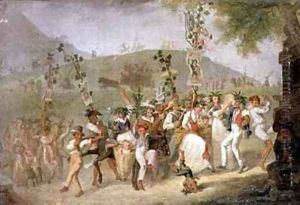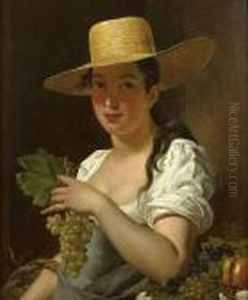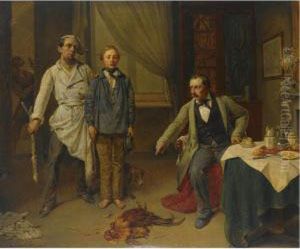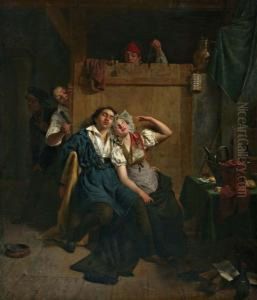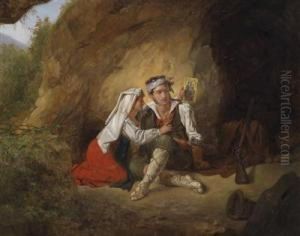Pieter van Hanselaere Paintings
Pieter van Hanselaere was a Belgian painter born on 17th January 1786 in Ghent, a city that has been a significant center for art and culture in Belgium. His life and career were framed within the context of the 19th century, a period that saw the rise of Romanticism, but also the beginnings of movements that would lead to modern art. Hanselaere's work, however, remained deeply rooted in the academic and classical traditions of painting, reflecting the teachings and influences of his time.
Educated at the Royal Academy of Fine Arts in Ghent, van Hanselaere was a disciple of the academic art tradition. This education grounded him in the techniques and subjects that were esteemed by the academies of Europe, focusing on historical and biblical themes, as well as portraits and genre paintings. His style was characterized by meticulous attention to detail, a rich palette, and a commitment to realism, qualities that were highly prized in academic circles.
Throughout his career, van Hanselaere achieved a considerable reputation, particularly for his religious and historical paintings. His work was appreciated for its narrative depth, emotional intensity, and technical skill. Despite the shifts in artistic trends over the course of his life, he remained loyal to the classical styles he had mastered, even as the art world around him began to embrace more avant-garde approaches.
Van Hanselaere's contributions to Belgian art were recognized by his contemporaries, and his paintings were exhibited in prestigious venues, including the Salon in Paris. His works found their way into private collections and churches, as well as public institutions, testifying to their broad appeal and the respect he commanded as an artist.
Pieter van Hanselaere passed away on 10th March 1862 in Ghent, leaving behind a legacy that, while perhaps overshadowed by the more revolutionary artists of his time, represents a significant chapter in the history of Belgian art. His dedication to the academic style and his ability to imbue traditional subjects with vibrancy and emotion continue to be appreciated by art historians and enthusiasts alike.
